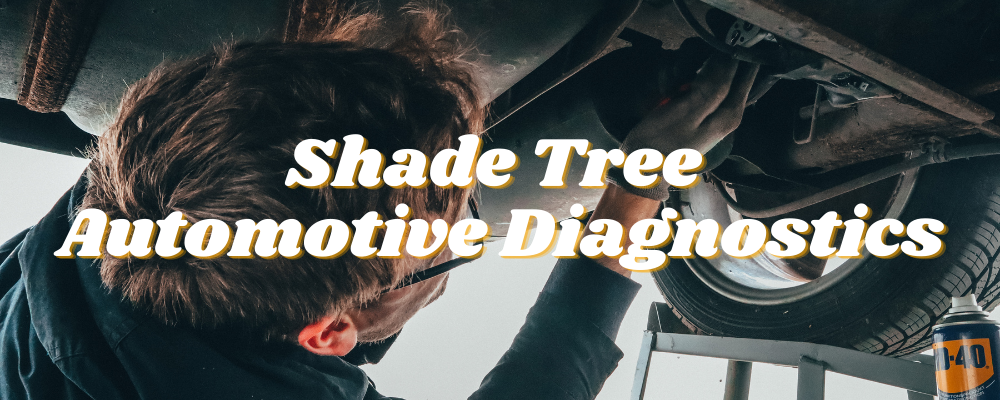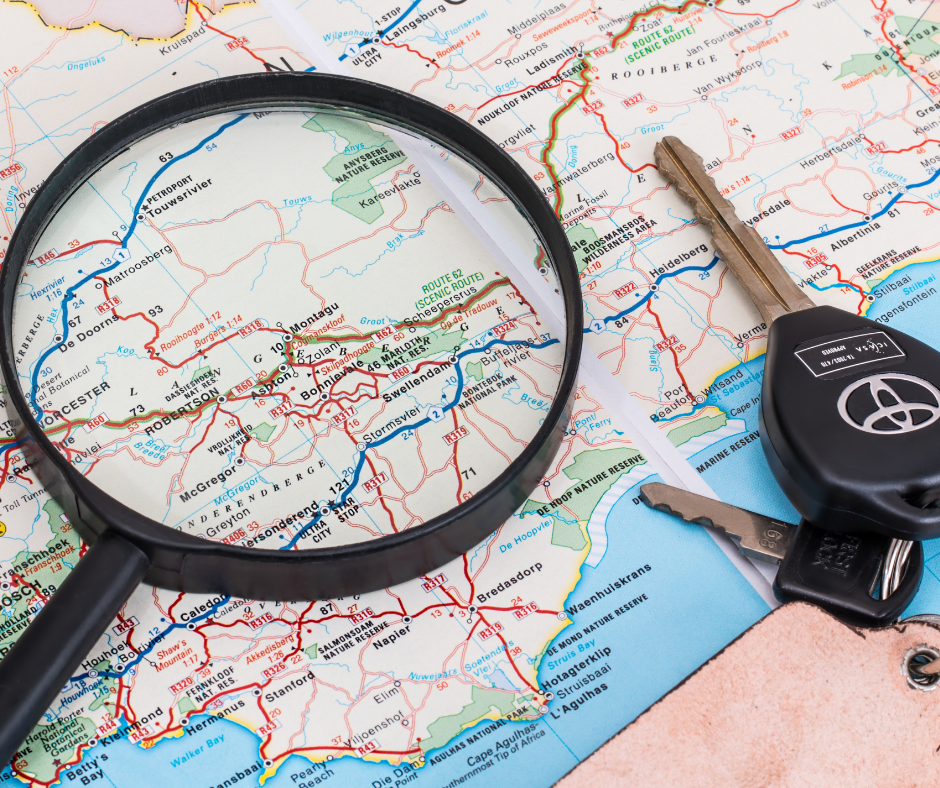
Learning a little more about how to better care for your automobile is a good idea for a number of reasons. It allows you to know if an unscrupulous mechanic is attempting to gouge you on your repairs, and that will save you money.
Further, it can prevent you from making unnecessary repairs, and that will save you money. It can help you locate a problem and fix it early, thus saving more money—sometimes a whole lot of money. It lets you be more independent in an era where people are entirely too dependent on others to survive.
Automotive Diagnostics To See No Evil
First, do a visual check of your vehicle. The following will assist you in deciding where to look and for what:
Look at your tires
Do they look low? A tire pressure gauge, available inexpensively at any discount store or auto parts store, will help you make sure tire pressure stays low. Maintain as necessary. Better tire pressure will make your vehicle safer and more fuel-efficient.
There are some very inexpensive air pumps for sale at discount stores, should you really want to stay on top of the air pressure in your tires. Motorcyclists and moped riders need to be exceptionally concerned about their tire pressures.
Look closely at your tires and inspect for severely worn edges, areas missing chunks of rubber, or objects sticking into the tire. Maintain or replace as necessary.
If your tires are relatively new and they seem to be wearing unevenly, take your vehicle into the shop for an alignment and likely a tire rotation. These two things are frequently lumped together in less costly automotive service “specials.”
Look under the vehicle for liquids
One drop usually means nothing. Look for consistent drip marks. Remember that during the summer months, your vehicle’s air conditioning will steadily drip water when in use—no worries.
Your coolant system may also spew an occasional bit of water or anti-freeze, and that’s okay too. If you find a stain indicating long-term or consistent leaking, trace the leak to its source: engine oil, transmission fluid, rear end oil, etc. Maintain or repair as necessary.
Sometimes, just getting under the vehicle with a pressure hose at the car wash will clean off years of old oil and debris that causes many ‘driveway’ leaks – thus fixing the faux leak.
Visually check your engine oil
Check it according to the manufacturer’s instructions, and also feel it with your fingers. Engine oil is the lifeblood of your vehicle’s power plant.
Does the oil feel thick, or does it feel watery? Thick is good, watery is bad! Change watery oil (and be sure to use an Engine Sentry* when you do change oil and filter). Add the appropriate oil if the level registers low. NEVER overfill your oil!
Check the coolant level
Be sure to use caution and follow the manufacturer’s instructions to avoid injury from hot, pressurized liquids. Maintain as necessary. If you haven’t had your coolant or anti-freeze checked lately, it might be advisable.
Be sure to never add coolant or anti-freeze that is not recommended by your vehicle’s manufacturer. Some radiators require special products so as not to erode or corrode them.
Visually check your engine compartment
Tighten caps, firmly tug/test hose connections, look for worn things, things that have blown into the engine compartment, etc. Maintain or repair as necessary. This is also a good time to do light engine cleaning.
Nothing too serious, just some rags and some degreaser: ammonia and water make a cheap, great degreaser, but it shouldn’t be used on aluminum – certainly not left on it. A toothbrush is also an excellent tool here – it makes quick work of much engine debris.
Visually check your automotive battery and connections
Make sure the connections feel tight at the battery. If you have green or white build-up on the battery, mix some baking soda with tepid water (1/4 cup of baking soda to one quart of water) and stir it thoroughly. Now, slowly pour it directly over the affected areas.
Don’t worry about all the fizzing and crackling – it’s just cleaning. Make sure you do this where the runoff won’t harm anything. An old toothbrush will make this go faster. When the terminals are clean and dry, apply a thin coating of automotive grease onto each battery terminal, and connection.
Automotive grease comes in small, plastic tubs that weigh about a pound each. They’re cheap, so get a good brand name. I use popsicle sticks to spread it with. Grease is good to have around for many automotive fixes and preventive maintenance actions.
Automotive Diagnostics To Hear No Evil
Some people are incredibly sensitive to the sounds their vehicles make. This is especially true of motorcyclists, those who refurbish vintage automobiles, and experienced mechanics. It’s a very worthwhile skill to develop.
There are mechanics who can listen to a running car engine and tell if the timing is slightly off, or the injectors are not operating properly. While this is a very neat thing to be able to do, you do not have to elevate your listening skills to that lofty place in order to get benefits from listening to your vehicle.
Listen To The Engine
(This is best done in relatively quiet surroundings until you get really good at it.) Open up the hood of your vehicle’s engine compartment. If necessary on your model, be sure to use the metal rod to lock the hood in the upright/open position.
Now, start your engine. Allow the engine to run for 30-60 seconds before you start listening too hard. Also, there are many moving parts inside of engine compartments, don’t wear loose clothing, and mind all your fingers and hair! Safety first.
A brief word about engine sounds
All engines make sounds. Some sound like jets and others have constant clicking noises, humming, or clattering. Which sounds are consistently made, and are okay, are unique to your specific vehicle’s engine.
The point being, don’t be alarmed the first time you really take a good listen to your engine. You’ll quickly learn the sounds that are okay, and the ones that are not.
You’re going to listen to your engine from three different positions:
- Directly in front of the car.
- On the left (driver’s side) side of the engine compartment.
- On the right (passenger’s side) side of the engine compartment. I like to start on the left-right in front of the driver’s door.
Lean over the engine compartment (again – be careful with clothing, hair, and appendages) and listen carefully. Try closing your eyes to heighten your hearing.
Listen for things that don’t sound ‘right.’ Such things might include: clattering, metal rubbing metal, clanging, and squeaks. If you hear such a thing, open your eyes and try to focus on it – moving the position of your head and ears as your track the sound to its source. Repeat this process at all three positions previously described.
This method of checking your engine can reveal loose caps, loose fan belts, loose fans, missing bolts, nuts, and many other things. Correct what you are able to, and have anything else dealt with by a service technician.
Don’t put your hands into your engine compartment to tighten something or check something while it is running. If you notice that the stays on the overflow tube are loose and rattling, turn off the engine before tightening.
Driving the car for a short distance
Driving your car for a short distance over a good road with the radio and air conditioning off and the windows down is a good way to hear some other sounds. Clattering might mean you have a lug nut that came off, and it’s stuck inside the hubcap. A metal-rubbing-metal sound may be a stuck brake.
Help from the assistant
The last listening project/technique is the best – or at least so people tell me. This one requires a willing and able assistant. The two of you climb into the vehicle together – you drive, and the assistant rides shotgun.
The assistant will require four things: some WD-40, a notepad, a small can of 3-in-1 oil, and a good rag. Head for a road that isn’t so smooth, and simply drive along. The assistant listens for those irritating squeaks, squeals, and rattles.
The assistant should move around inside the vehicle, focusing on the sounds to locate their sources. One of the two lubricants will fix almost any squeaking – and the rag ensures a nice, tidy application of the chosen lubricant.
Some things, such as loose or missing screws or bolts, should be recorded on the notepad for maintenance or repair later when you get back home to the tools. You won’t believe how quiet your cockpit becomes after you perform this process once or twice.
Automotive Diagnostics To Smell No Evil
It may sound strange that smelling your vehicle can be a useful maintenance activity, but believe me it is. And I’m not just talking about needing to buy one of those cute little green trees that permeate every inch of your vehicle’s interior with the smell of pine – or something like that.
Actually, you really already do this in at least one instance – the smell of gasoline. And we’ll cover that herein.
Smell of smoke
Let’s begin with the smell of smoke. If your vehicle is smoking anywhere at any time it’s time to get some service – immediately. It doesn’t matter if you smell the smoke, or see it – you need to deal with the problem ASAP.
Smoke coming from anywhere is never ‘okay’ in a vehicle, though you may just have some spilled fluids on a hot engine surface or some oil that splashed into your wheel assembly. No matter – get it checked and make sure.
Smell of gas
The smell of gas is most often associated with a flooded engine: too much gas for the spark to ignite. The gas sits in the engine, and the odor becomes more noticeable for a short time, and then starts to rapidly dissipate.
This tends to happen only when you are starting the engine. The smell of gas at any other time, or the constant smell of gas is indicative of another type of problem, and one that is potentially serious, or dangerous: a leak in the fuel system.
You should have this checked out by a qualified mechanic as soon as possible.
The smell of rotten eggs
The smell of rotten eggs, usually associated with sulfur or burning sulfur, is likely a problem with your catalytic converter. Servicing a catalytic converter is highly technical, and will require the attention of a trained technician or mechanic.
You should make an appointment for your vehicle as soon as possible. A maladjusted or failing catalytic converter can be costing you precious mileage!
Burnt toast smell
The smell of burning bread sometimes referred to as ‘burnt toast,’ is most often associated with an electrical short circuit or possibly the burning/melting of the insulation around the affected wires, fuses, or connections.
If there are any secondary signs, then you should not run the engine until a qualified technician resolves the issue. Left unchecked, electrical shorts can affect many of the systems in your vehicle.
The smell of hot rubber
A sweet odor, especially when mixed with the smell of hot rubber, usually means there’s a coolant leak or a problem with the cooling system. If you are driving, stop and visually check the engine and the radiator.
Driving a vehicle with an overheated engine can do untold damage to all sorts of things, and turn a simple repair with a modest cost into a nightmarish expense that prevents you from using your vehicle for days, or even weeks.
The smell of burning oil
The smell of burning oil is a pungent, acrid stench that can be very slight, or quite pronounced. In either case, you need to check your engine to make sure you don’t have an oil leak, and also to ensure that you have the recommended amount of oil in your engine.
Usually, the smell of burning oil is something minor, such as a small spill on the engine, a slight overflow that got blown onto a hot engine part, or low engine oil. Be sure that when you change your engine oil you insist on an Engine Sentry®.
By this, you’ve definitely gotten your vehicle in much better condition, and you should have learned a thing or two to keep it running great for a long time to come.
*(Engine Sentry is a registered trademark of Iron Horseman Technologies. Iron Horseman Technologies is the trademark of Iron Horseman Technologies in Tucson, Arizona.)




Hmm is anyone else having problems with the images on this
blog loading? I’m trying to determine if its
a problem on my end or if it’s the blog. Any feedback would be greatly appreciated.